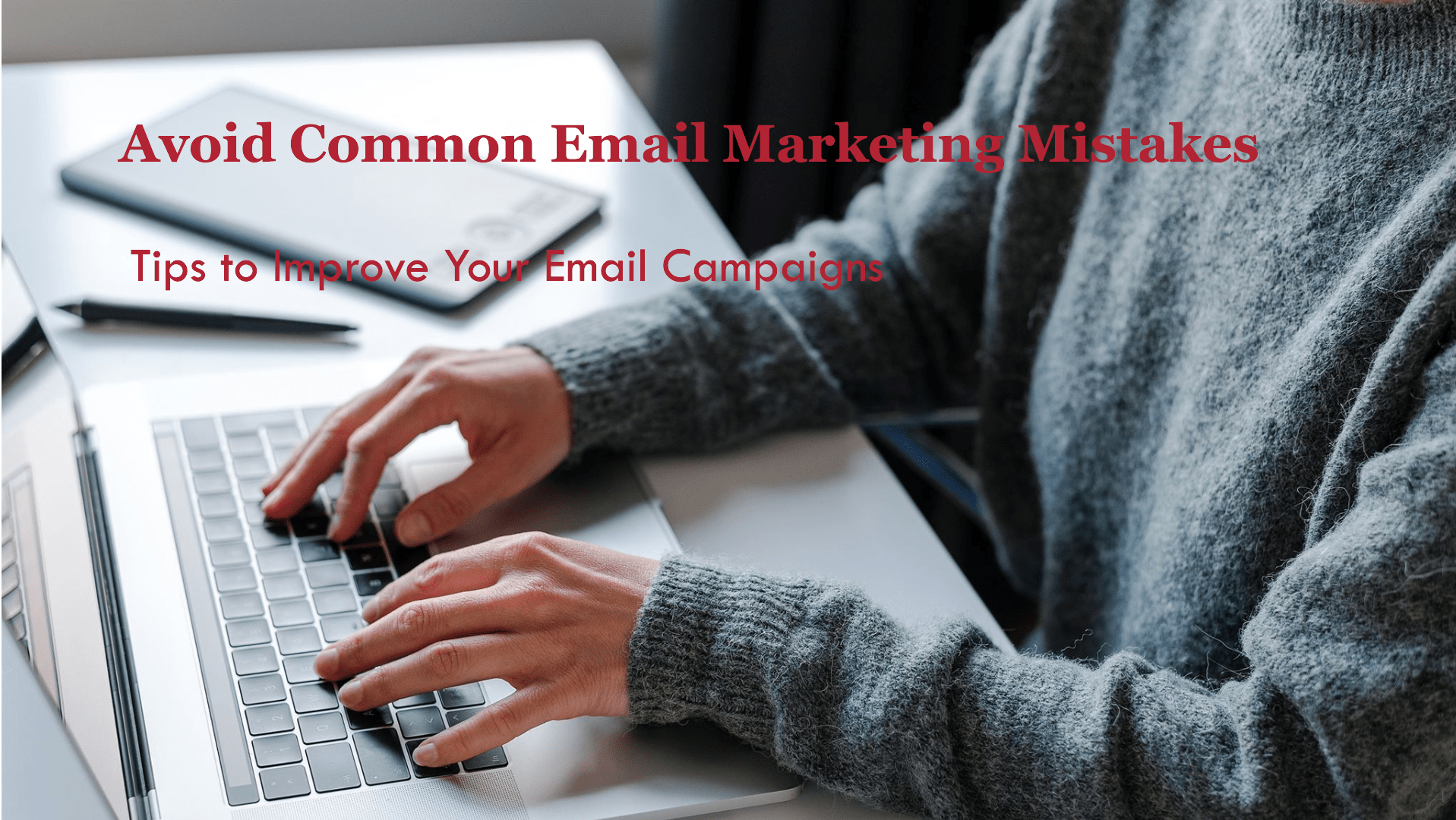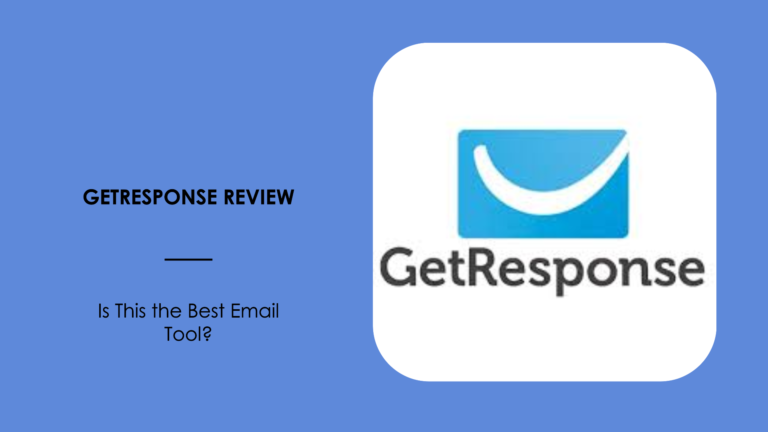Email marketing has proved to be a powerful tool for any digital marketer because it allows them to reach their audience directly via the inbox.
However, even experienced marketers can go wrong while using this arena.
If emails are sent that are not effectively prepared, this leads to lost opportunities, a harmful effect on the brand reputation, and disengaging the subscribers.
In this article, we are going to review the most common mistakes that businesses make when performing email marketing.
The common mistakes are sending an email at the wrong time and not personalizing it.
Learning how to keep away from such mistakes is important for enhancing engagement, bettering conversion rates, and making emails that actually connect audiences.
Table of Contents
Let’s get started!
Disclosure: Some of the links in this post are affiliate links, meaning that if you click on them and make a purchase, I may earn a small commission at no extra cost to you. Rest assured, I only recommend products and services that I have personally used and believe in. By using these affiliate links, you’re supporting my work, helping me continue to offer valuable content on this blog free of charge for readers like you. Thank you for your support!
Sending Emails Without Clear Goals

The most common mistake in e-marketing is sending an e-mail without any motive or direction.
Some marketers merely send occasional content or promotions with the sole aim of keeping in touch with their audience.
Without having a certain objective, these emails may not function effectively.
Without an apparent intent to drive visitors to your website to encourage them to make purchases, promote a new product, or simply build brand awareness, your message could appear confusing, irrelevant, or even unfocused.
Poor engagement could mean fewer clicks, lower open rates, and missed conversion opportunities.
The subscribers will start getting uninterested; some even mark your emails as spam, which might affect your sender’s reputation.
To prevent this, it is very important to establish clear and measurable goals for every single email campaign.
Ask yourself what you really want to get from each email: whether you want to increase sales, restart your users who are no longer active, educate your audience, or drive traffic to a new product page.
Once you have set the goal, the email content, design, and calls to action will need to be aligned with that objective.
Each email should also align with your overall marketing plan to ensure that the message is in line with your brand’s goals and maintains a cohesive marketing strategy.
Now that you have clear goals and a purpose for each of your emails, you can create stronger campaigns that benefit both your audience and your business.
Neglecting Personalization
Sending the same email to each member on your list is not exactly a good idea in email marketing.
Personalization of messages should be on the top of the agenda as a way to connect with the audience appropriately.
The emails feel distant and do not hold much importance when they are not personalized; therefore, people tend to start ignoring or unsubscribing from them.
Without a personal touch, all this can do is lower rates not only for opens and clicks but also make it difficult for your brand to keep customers loyal or get them to buy.
To avoid this, use segmentation within your e-mail list, grouping similar categories together such as demographics, interests, behaviors, or purchase history.
You’ll then be able to generate content that targets that particular group with pinpoint accuracy on the needs or preference points.
Employ the use of customer information to make your email messages personalized in content, by first naming the recipient or recommending products related to their purchase history.
Next, add in some dynamic content and behavioral triggers to really knock it up a notch.
Examples of this include follow-up emails regarding cart abandonment or messages about products related to the customer’s browsing history.
In all, personalization creates a better feel with your audience for relevance and timeliness.
Overloading with Sales Content

Using email as a way of selling works great, but many sales emails may become a problem.
Sending too many emails offering to sell something or another, your subscribers might get tired of them, and stop paying attention at all.
When people get emails about sales and discounts only, they may think that all you care about is their money and not about them.
This will result in a higher number of unsubscribes, lower opens, and clicks, and may even bring damage to your brand.
Balance sales content with valuable content: Instead of pure promotion, intersperse your emails with teaching, inspiring, or entertaining your audience. You can send guides, industry tips, and tricks or stories about your brand.
This type of content has a lot to add to building a good relationship with your audience beyond being purely an offer of sale.
By regularly offering them content matching their interest and needs, they are most likely to stay interested, trust your brand, and respond well to your promotional emails.
Ignoring Mobile Optimization

One of the big pains in email marketing today is making sure the emails look good on phones.
The majority of their target audience views emails through their smartphones. It would be frustrating for users if an email does not show up well on a phone.
If your emails are hard to read are laid out weirdly, or need to be zoomed in on a lot, people might just delete them or even unsubscribe.
It is important to optimize for mobile, but if nobody opens your emails, that doesn’t mean your campaigns are going to be less responsive because your responsiveness is poor; people simply may not be able to interact with the content the way they’re supposed to.
To avoid this, use email design templates that automatically adapt the layout to the device on which it’s being viewed.
This makes sure your email will look nice whether it’s opened on a computer, tablet, or a phone.
Also, make sure that your subject lines aren’t too long since phones have more limited space to display them.
Make your action buttons tap-friendly for phones by making buttons big and text short.
Making your emails mobile-friendly makes them more readable, gets your recipients to be more engaging, and ensures that more people will see and like your message.
Poor Timing and Frequency
The trick to email marketing is knowing how and when to deliver your messages.
Send too much, and subscribers will begin to feel bombarded, opting for the unsubscribe link.
On the other hand, if you don’t email them often enough, people might forget about your brand, and reaching your audience will be much more challenging.
Yet, it’s about striking that right balance between keeping your subscribers updated without making them hate you or simply forgetting about you.
How to avoid this: test the frequency of your emailing to see what works best for your audience.
While some businesses may do quite well with daily emails, others may have better results with weekly or bi-weekly emails.
First, do some A/B testing with different schedules while tracking key metrics on the number of opens, the number of clicks on links, and the number of un-subscribers.
Also, seek data revealing the best time to send emails. It has been proven that some days and times work better than others, which again all changes depending on what industry you’re in and who your audience is.
You should look at your own data to determine the perfect times to send emails where they are more likely to be read.
The balance between when and how often to send emails will keep your audience interested without overwhelming them.
Failing to A/B Test Emails

One surefire way to enhance your email marketing is through A/B testing. Too many marketers forget to take this vital step.
Failing to test variations of your emails against one another means you’re passing up information in a valuable form that tells you what your audience prefers.
And if you don’t do any A/B testing, you’re basically guessing what works best in those emails, say, subject lines, pictures, buttons, and how the content lays out.
This can lead to fewer open rates, less engagement with your emails, and fewer people taking action after reading those emails. You may also miss opportunities to make your campaigns better.
To avoid this mistake, make A/B testing part of your regular emailing practice. Again, start testing one thing at a time, like two different subject lines, to see which one can yield the most opens.
You can test other parts of the email too, such as design, buttons, images, or what time of day you send it. Systematic comparisons of versions let you capture data on what your audience likes best.
Take that data and make improvements to your campaigns on a continuous basis to make sure that each email you send out is even better than the last.
Eventually, A/B testing will lead to more people engaging with your emails, more conversions, and a stronger email marketing plan overall.
Not Monitoring Metrics and Analytics

With email marketing, it isn’t enough to simply know how many people opened your emails.
You have also got to pay attention to other key data, which include the number of people who click on the links in your emails, how many of those people actually buy something, the number of your emails that are bouncing back, and how many people unsubscribe.
Only looking at open rates or any other single metric, does not adequately reveal the performance of an email campaign.
Not analyzing each of these key metrics means you may pass by some insights that can be used in enhancing your campaigns. That means you may underperform and fail to know why.
To avoid this, it’s crucial to keep track of certain numbers in every email campaign.
The click-through rate will tell you about people wanting to interact with your message’s content, while the conversion rates will also show how many completed an action intended, such as making a purchase or signing up for something.
Bounce rates can indicate whether there are problems with the delivery of your emails, and unsubscribe rates can show how well you are keeping your audience interested.
By taking a look at these numbers on a regular basis, you’re in a better place to know the patterns, make changes to your strategies, and ultimately make your future campaigns a whole lot better.
With real information to feed this improved approach, you will be able to further engagement, enhance the return on the usage of your emails, and ensure that you are meeting both your audience’s needs and those of your business goals.
Not Offering an Easy Unsubscribe Option

It is a big mistake not to make it easy for people to unsubscribe from your list.
Subscribers will get frustrated with you, and that gives them a negative impression of your brand.
When users can’t find an easy way to unsubscribe or must go through a lot of trouble to stop getting e-mails from you, they may feel ensnared and less happy with your company.
That frustration will damage your brand’s reputation and increase the likelihood that your emails will be marked as spam, which hurts both delivery and reputation as a sender.
To ensure an easy opt-out from your e-mails, always include an unsubscribe link in every e-mail that is visible and clear.
At the footer of the e-mail body, include simple words such as “Unsubscribe” or “Manage Subscription.” You can make this better by adding a preference center where people can decide on the frequency or the type of content they wish to receive.
This means subscribers have more control over their inboxes without having to unsubscribe entirely.
You will build trust and show respect for your audience’s decisions by keeping the process of opting out very simple and obvious.
This will serve you much better in the long run than an email list merely ‘healthy’ due to being engaged.
Conclusion
In this article, we have discussed some of the common mistakes in email marketing.
Sending an email without clearly defined goals, personalization, over-sale messages, failing to optimize for mobile, timing issues, over-sending, and not testing variants of email messages.
Overlooking core metrics: making it difficult for people to unsubscribe. All these errors can harm your email marketing by reducing engagement, missing chances to connect with customers, and defacing the brand reputation.
The best way for an email marketing plan to thrive is through constantly learning and improving.
By that, it means checking your email performance, testing your ideas against others, and listening to what your audience wants. Over time, this is how you’ll fine-tune your emails.
That means regularly evaluating your approach to emails based on data insights, testing different content, and readjusting when you send those emails. It will ensure that marketing objectives are met.
Final Tip: That being said, email marketing is not set-it-and-forget-it. It does take regular review and a strategy for adjustments based on data and audience feedback for it to continue to be successful.




